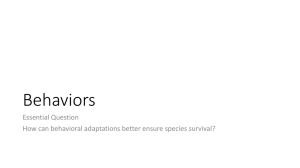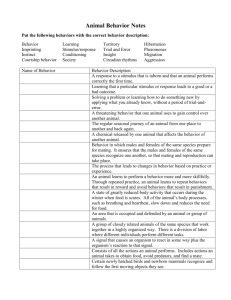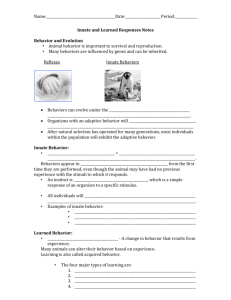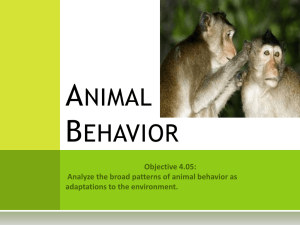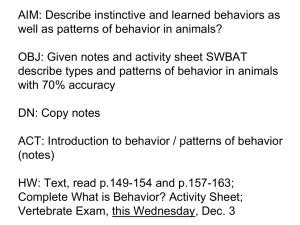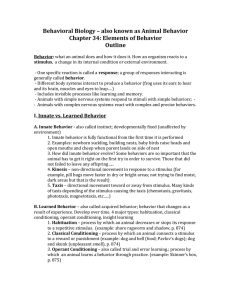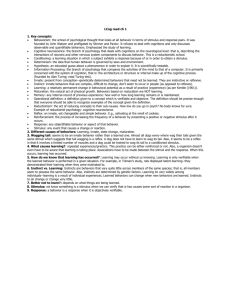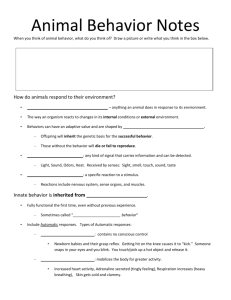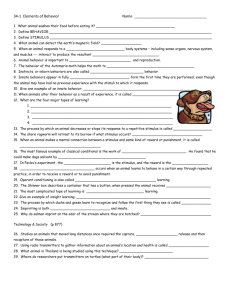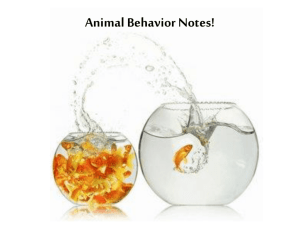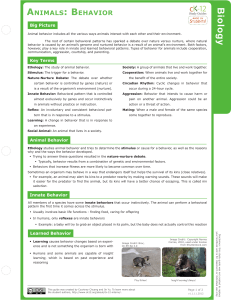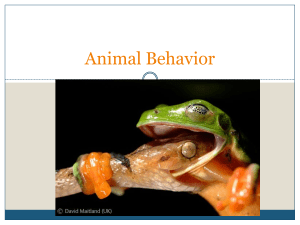Animal Behavior Notes
advertisement
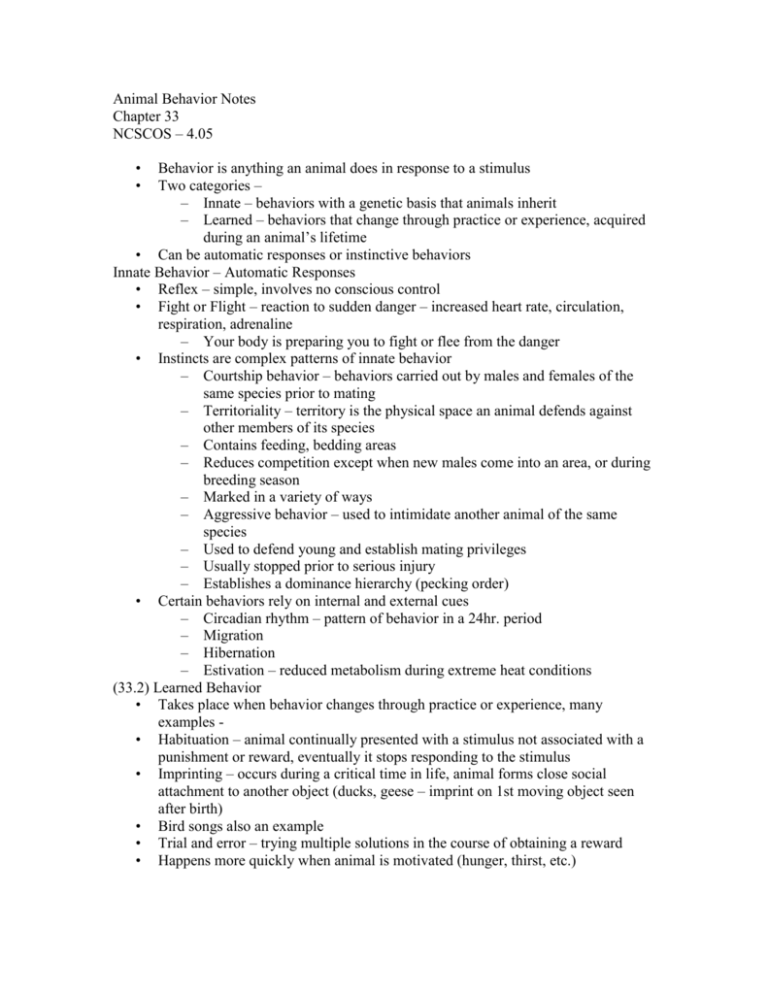
Animal Behavior Notes Chapter 33 NCSCOS – 4.05 • • Behavior is anything an animal does in response to a stimulus Two categories – – Innate – behaviors with a genetic basis that animals inherit – Learned – behaviors that change through practice or experience, acquired during an animal’s lifetime • Can be automatic responses or instinctive behaviors Innate Behavior – Automatic Responses • Reflex – simple, involves no conscious control • Fight or Flight – reaction to sudden danger – increased heart rate, circulation, respiration, adrenaline – Your body is preparing you to fight or flee from the danger • Instincts are complex patterns of innate behavior – Courtship behavior – behaviors carried out by males and females of the same species prior to mating – Territoriality – territory is the physical space an animal defends against other members of its species – Contains feeding, bedding areas – Reduces competition except when new males come into an area, or during breeding season – Marked in a variety of ways – Aggressive behavior – used to intimidate another animal of the same species – Used to defend young and establish mating privileges – Usually stopped prior to serious injury – Establishes a dominance hierarchy (pecking order) • Certain behaviors rely on internal and external cues – Circadian rhythm – pattern of behavior in a 24hr. period – Migration – Hibernation – Estivation – reduced metabolism during extreme heat conditions (33.2) Learned Behavior • Takes place when behavior changes through practice or experience, many examples • Habituation – animal continually presented with a stimulus not associated with a punishment or reward, eventually it stops responding to the stimulus • Imprinting – occurs during a critical time in life, animal forms close social attachment to another object (ducks, geese – imprint on 1st moving object seen after birth) • Bird songs also an example • Trial and error – trying multiple solutions in the course of obtaining a reward • Happens more quickly when animal is motivated (hunger, thirst, etc.) • Conditioning – animals associate a secondary stimulus with a primary stimulus and elicit the same response • Classical – Pavlov’s dog • Operant – B.F. Skinner Insight – using previous experience to respond to a new situation Animal Communication • Exchange of information that results in a change in behavior • Combination of innate and learned • Sounds, sights, touch, smell – Growling lion, posturing bird, etc.
